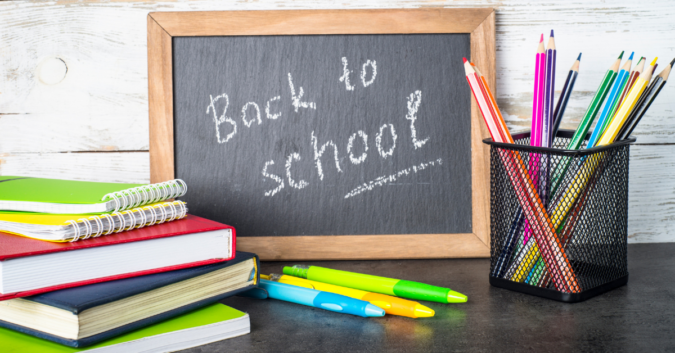With school about to begin in many parts of the country, it’s time to think about some of the steps you can take to help your child have a successful academic year.
It may go without saying, but no two kids are the same, and every child’s home and learning environments are unique. That said, there are several things that can be key to a child with cerebral palsy starting their school year off right.
The six tips below may help you support your child as they begin the next year in their academic journey.
1. Communicate Positively With Your Child's Attendant
Some children with cerebral palsy will require an attendant to be in class with them for all or part of the school day. Cultivating a positive relationship with your child’s attendant is crucial for your child’s success. It can also bring you better peace of mind, knowing that your child is in good hands.
Be sure that you communicate well with your child’s attendant, so that they have a better understanding of when your child needs assistance and when they need independence. Attendants can be a great asset for your child, and in many cases they can help your child learn at the pace and in the manner that suits them best.
2. Know That Not Everyone Will "Get It Right"
Even the most well-intentioned teachers and school staff sometimes make mistakes or are not attentive to your child’s unique needs. As Jessica Grono writes in her article “Advice for Cerebral Palsy Students to Thrive in School,” when teachers or school staff say something without thinking or do something shortsighted, these are “teachable moments” for them.
When such an incident occurs, your child may wish to address the situation themselves. If they don't, you should ask your child whether or not they want you to reach out to the faculty or staff member to discuss the incident. As Grono points out, education has been steadily improving — and many teachers are better equipped to work well with children with disabilities.
3. Put Time and Energy Into Your Child's IEP
Many children with cerebral palsy will qualify for an individual education plan (IEP). An IEP is a written legal document that outlines the type of instruction and services your child will receive during their time in the public school system. An IEP can help parents better understand how special education services will best support their child’s learning processes.
It’s recommended that you bring an advocate, such as a relative or close friend, along with you to any IEP meetings. They may be able to speak up on your behalf and say things that you do not feel comfortable saying. As suggested by Everyday Health, families may also get in touch with a local family advocacy center to guide them through the IEP process.
4. Learn the Best Schooling Model for Your Child's Needs
Due to the pandemic, which has shifted some school classrooms from traditional, in-person learning to remote, online learning, the American school system has certainly faced some major transitions during the past two years. One bright side of this, however, is the ability for children with cerebral palsy to experiment with different learning models.
Virtual classes and classrooms vary from school to school, and are often met with mixed reactions. According to recent research, virtual learning can be a tradeoff: while students with disabilities may, in some cases, benefit from attending classes in a more comfortable at-home environment, other students have suffered from auditory and visual difficulties.
5. Watch for Signs of Bullying
It’s a problem as old as time, and, unfortunately, bullying remains a major issue in schools today. According to the U.S. Department of Health and Human Services, children with disabilities such as cerebral palsy are at a higher risk of being bullied by classmates.
The non-profit organization Stomp Out Bullying has helpfully identified a list of signs that may indicate your child is being bullied at school. Note if your child:
- Comes home with torn, damaged, or missing pieces of clothing, books, or other belongings
- Displays or attempts to hide unexplained cuts, bruises, and scratches
- Seems afraid of going to school, walking to and from school, riding the school bus, or taking part in organized activities with peers
- Finds or makes up excuses as to why they can’t go to school
- Has lost interest in school work or suddenly begins to do poorly in class
- Appears sad, moody, teary, or depressed when he or she comes home
- Experiences a loss of appetite
- Appears anxious or suffers from low self-esteem
If your child displays any of these signs it’s best to talk with them and with the school staff as soon as possible to learn more about what’s going on — and about any potential solutions.
6. Listen to Your Child Above All Else
Perhaps nobody knows your child as well as you do — and your role as their biggest advocate cannot be understated. However, while it can be tempting to think that you always know what is best, it’s likely your child will let you know what their limitations, goals, and hopes are. The best way to understand what drives your child is by simply listening to them.
You may ask yourself:
- What does my child really enjoy? What are they good at?
- What does my child avoid or shy away from?
- What learning method(s) does my child embrace?
- How well does my child work/play with others?
Knowing the answers to these questions — and others — will help you better understand what obstacles your child faces and how you can help them overcome them. Listening to your child is of the utmost importance when it comes to putting them in the best position to learn effectively and enjoy their time in school.
